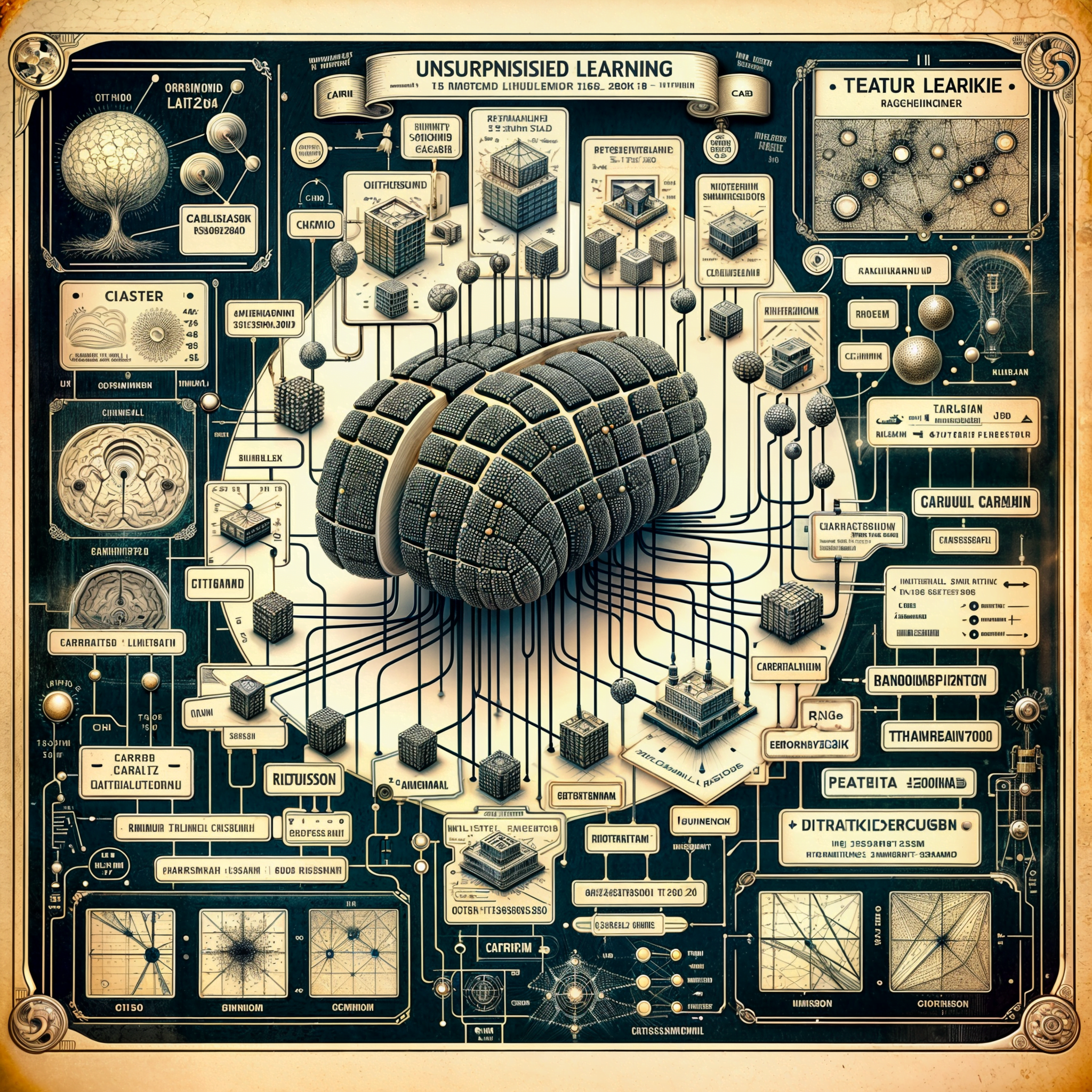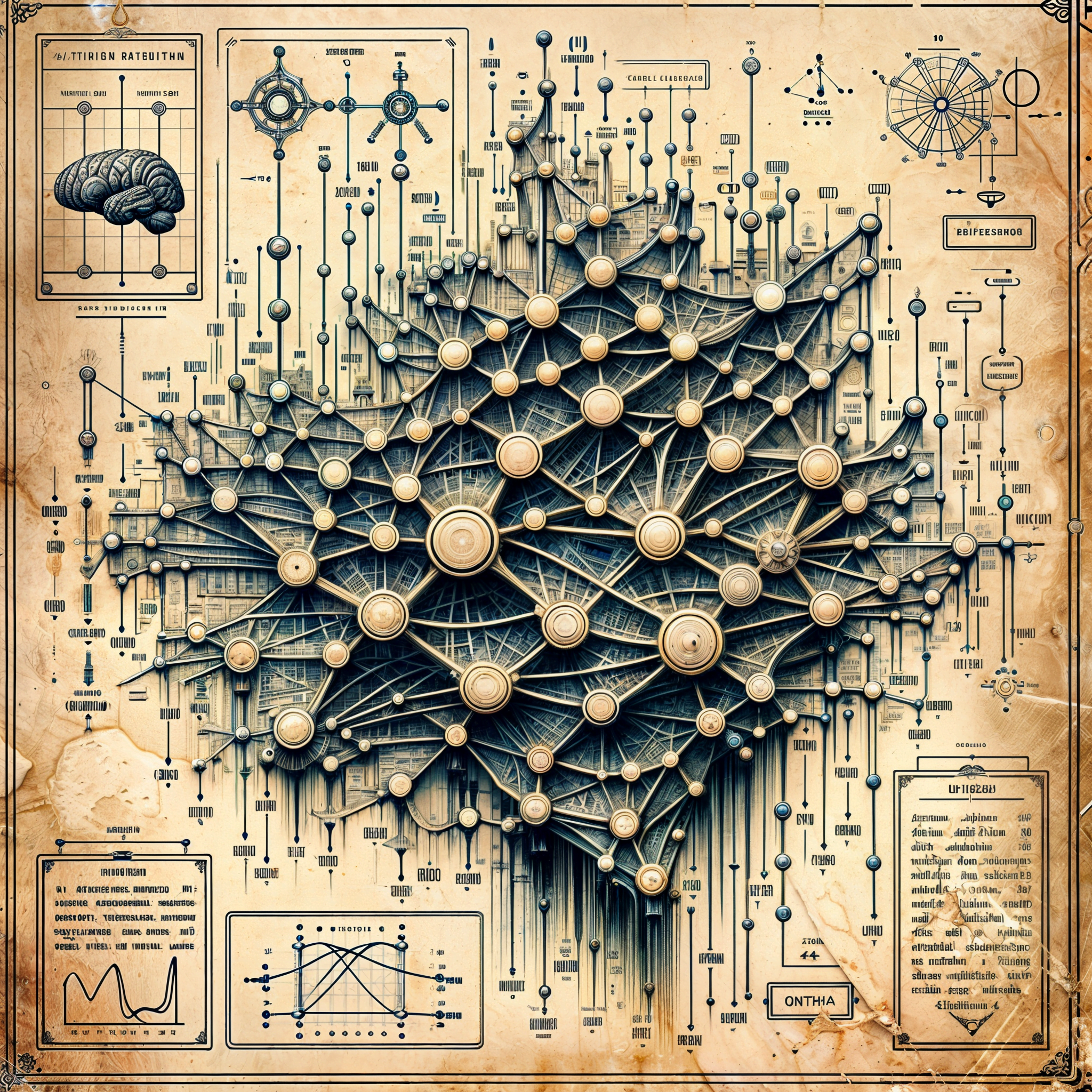Last Updated on February 22, 2024 2:05 pm by Laszlo Szabo / NowadAIs | Published on February 22, 2024 by Laszlo Szabo / NowadAIs
Entering the Depth of AI: What is Deep Learning? – Key Notes
- Deep Learning is a subset of machine learning, using algorithms and deep neural networks for complex tasks.
- It emulates human intelligence, improving through experience and data analysis.
- Applications span various industries, including healthcare, automotive, and finance.
- Challenges include data requirements, computational demands, and model interpretability.
Introducing “What is Deep Learning?”
Deep Learning, a subfield of Machine Learning, has changed our understanding of Artificial Intelligence by employing complex algorithms and deep neural networks to efficiently perform tasks involving both structured and unstructured data.
At its core, deep learning imitates human intelligence, improving from experience through the use of neural networks that consist of input, multiple hidden, and output layers. This approach enables Deep Learning models to analyze data, identify intricate patterns, and predict outcomes, a process heavily reliant on data quality and careful tuning of the algorithm’s hyperparameters.
The applications of deep learning are vast, touching upon areas such as weather forecasting, speech recognition, image and people identification, and highly targeted advertising strategies.
With platforms like TensorFlow, developed by Google, leading the charge, Deep Learning proves to be a pivotal technology in advancing machine learning and AI.
This field has also seen significant contributions in medical diagnostics, proving in some cases to be as or more effective than human diagnostics.
Real-world ai applications extend to self-driving cars, smart cities, and agricultural innovations, showcasing the transformative potential of deep learning across industries.
The primary goal of this article is to delve into the intricacies of deep learning, unraveling its complex nature and highlighting its distinction from other fields such as machine learning and Artificial Intelligence (AI).
By explaining terms like deep AI, neural networks, and deep Machine Learning, readers can gain a comprehensive understanding of what deep learning is and why it’s fundamental to current and future technological advancements.
The article will explore how Deep Learning works, its practical applications, and the challenges that come with implementing deep learning solutions.
Additionally, insights into the future prospects of deep learning will be shared, underscoring the potential evolution and growth of this dynamic field. Through a blend of theoretical explanation and practical examples, this article aims to provide a clear and insightful guide to Deep Learning, addressing both its capabilities and its complexities.
Define a Deep Learning Network

Deep Learning, a cornerstone of modern Artificial Intelligence (AI), represents a huge step forward in how machines can learn and make decisions.
Through a process that mirrors human cognition, Deep Learning enables machines to solve complex problems by learning from data iteratively.
This section elucidates the foundational aspects of deep learning, delineating its mechanisms, applications, and distinguishing features from related technologies.
Foundation and Mechanism:
At its essence, deep learning is a subset of machine learning, characterized by its use of artificial neural networks with multiple layers. These networks are designed to mimic the human brain’s structure and function, enabling machines to learn from data in a way that resembles human learning.
The architecture of deep learning involves deep neural networks, convolutional neural networks, and recurrent neural networks. These models are adept at handling a wide array of tasks, from image and speech recognition to natural language processing and autonomous vehicle navigation.
One of the critical strengths of deep learning is its capacity for automatic feature extraction. This means that, unlike traditional machine learning algorithm models that require manual feature engineering, deep learning models can learn to identify and utilize the most relevant features from the data autonomously.
Applications Across Industries:
Deep learning’s versatility allows it to be applied in numerous fields, significantly impacting sectors such as healthcare, where it enhances diagnostic accuracy, finance, for fraud detection, and the automotive industry, in the development of self-driving cars.
Beyond these, its applications extend to natural language processing for chatbots, computer vision for facial recognition, and even agriculture, where it supports crop analysis and management.
Challenges and Considerations:
Despite its profound capabilities, deep learning is not without its challenges. The technology demands substantial data for training and considerable computational power, typically provided by high-performance GPUs or cloud-based solutions. This requirement sometimes limits the accessibility of deep learning for smaller organizations or projects.
Another notable challenge is the interpretability of deep learning models. Due to their complex nature, understanding the decision-making process or the “reasoning” behind a deep learning model’s output can be difficult.
This “black box” issue is a significant area of ongoing research and development within the field.
In summary, deep learning represents a transformative approach to AI, offering a deep machine learning mechanism that closely resembles human learning processes.
Its ability to make complex, non-linear correlations and process unstructured data like text and images positions it as a pivotal technology in the advancement of machine learning and AI. However, as with any technology, it faces challenges that must be addressed to unlock its full potential across various applications.
Understanding Deep Learning and Deep Neural Networks
Deep Learning, a subset of Machine Learning, utilizes deep neural networks (DNNs) to model and solve intricate problems by learning from vast amounts of data.
These networks are composed of multiple layers of interconnected nodes, similar to the human brain’s biological neurons, and are capable of learning complex representations of data. Here’s a deeper dive into the understanding of deep learning:
Hierarchical Pattern Learning:
DNNs are adept at discovering hierarchical patterns within data, which allows them to recognize features at different levels of abstraction. For example, in image recognition, the initial layers may detect edges and colors, while deeper layers might identify more complex elements like shapes and objects.
This process eliminates the need for manual feature engineering, which is a time-consuming and often complex task in traditional machine learning methods.
Applications and Successes:
The impact of deep learning is evident across various fields. For instance, it has revolutionized image recognition, enabling computers to identify and classify images with accuracy comparable to or surpassing human capabilities.
In natural language processing, deep learning models have improved machine translation and speech recognition systems, making digital assistants and chatbots more efficient and human-like in their interactions.
Resource Requirements:
Training deep learning models requires significant computational resources. Fortunately, advancements in cloud computing and the development of specialized hardware, like GPUs, have made it more feasible to train these models efficiently.
Despite these advancements, the need for large datasets remains a challenge, particularly in areas where data is scarce or privacy concerns limit data availability.
Deep learning extends to various machine learning tasks, including supervised learning, where labeled data is used to train models, and unsupervised learning, which deals with unlabeled data, allowing the model to find structure within the input data itself.
Moreover, reinforcement learning, a type of machine learning where an agent learns to make decisions by performing actions and observing the results, also benefits from deep learning techniques.
For those interested in delving into deep learning, prerequisites include a foundational understanding of mathematics and programming languages like Python. It’s also essential to have a solid grasp of machine learning concepts and familiarity with the workings of artificial neural networks and nodes, as outlined in resources like IBM’s deep learning guide.
The practical applications of deep learning are vast and varied. In addition to the technologies mentioned, deep learning plays a pivotal role in systems that require pattern recognition and decision-making based on Big Data. These applications offer insights that drive critical business and technological decisions.
Deep learning models such as Convolutional Neural Networks (CNNs) and Recurrent Neural Networks (RNNs) have specific uses. CNNs are primarily used for tasks that involve image classification and object detection due to their ability to process grid-like data.
In contrast, RNNs are suited for sequential data, making them ideal for natural language processing and speech recognition.
The iterative nature of deep learning algorithms is crucial for their success. They perform tasks repeatedly, adjusting through layers that facilitate learning, unlearning, and relearning to refine the outcomes. This iterative process is powered by mechanisms such as gradient descent and backpropagation, which adjust the weights within the network to minimize errors.
Frameworks like TensorFlow have democratized access to deep learning, enabling businesses to integrate AI and machine learning with minimal expertise in the underlying technology. This has opened up a world of possibilities for organizations of all sizes to leverage deep learning for their needs.
The Difference between Deep Learning, Machine Learning, and AI
Artificial Intelligence (AI), Machine Learning (ML), and Deep Learning (DL) are interconnected fields that represent a hierarchy of data processing and learning capabilities in machines. Here’s how they differ:
AI or Artificial Intelligence: The Broadest Scope
AI is an umbrella term that describes machines designed to mimic human intelligence. This includes reasoning, learning, problem-solving, and perception. AI systems can be as simple as a chess program or as complex as an autonomous vehicle.
Within AI, there are three categories:
Narrow AI: Systems that are trained to perform specific tasks, such as voice assistants or recommendation engines.
General AI: Hypothetical machines that possess the ability to understand, learn, and apply knowledge in a way that is indistinguishable from human intelligence.
Superintelligent AI: A future form of AI that surpasses human intelligence across all fields, from creativity to general wisdom.
ML or Machine Learning: A Subset of AI
ML is a specific approach within AI that enables machines to improve at tasks with experience. It involves algorithms that learn from data patterns and make decisions with minimal human intervention.
Unlike traditional AI, which may rely on hard-coded rules, ML uses statistical methods to enable machines to improve their performance on specific tasks over time.
DL or Deep Learning: A Specialized Subset of ML
DL is a further specialization within ML that uses artificial neural networks to mimic the way humans learn from large amounts of data. These neural networks are composed of layers that can recognize patterns and make connections, much like the human brain.
A key difference between DL and traditional ML is the capability of DL algorithms to perform automatic feature engineering, meaning they can automatically identify the most relevant features from the data for the task at hand.
DL algorithms typically require a much larger volume of data than ML algorithms, often millions of data points, to achieve their complex pattern recognition capabilities.
Comparison of Requirements and Capabilities:
AI Type | Data Requirement | Computational Power | Feature Engineering | Example Applications |
|---|---|---|---|---|
AI | Varied | Varied | Manual/Varied | Chess programs, Automated customer service |
ML | Thousands | Moderate | Manual | Fraud detection, Email filtering |
DL | Millions | High | Automatic | Image recognition, Natural language processing |
In summary, AI encompasses a broad array of machine intelligence capabilities, ML is a subset of AI focused on algorithms that learn from data, and DL is a subset of ML that uses complex neural networks for learning from vast data sets. These technologies have collectively advanced the creation of intelligent machines, transforming various industries by solving complex problems through data-driven learning and decision-making.
How Deep Learning Works
Deep Learning, a sophisticated branch of Artificial Intelligence, harnesses the power of artificial neural networks to interpret complex data.
These networks are structured in layers, each with a distinct role in the data processing pipeline. To elucidate how deep learning functions, we can break down its workflow into several key steps:
Layered Structure of Networks:
Input Layer: This is where the deep learning model receives the raw data. Each node in this layer represents a unique feature of the input data.
Hidden Layers: Multiple hidden layers exist between the input and output layers. These layers perform a variety of computations to transform the input data. As data passes through each layer, the model extracts higher-level features. The complexity and depth of these layers are what give “deep learning” its name.
Output Layer: The final layer produces the model’s prediction or decision, based on the information processed through the hidden layers.
Learning through Data:
Deep learning models require extensive data to learn effectively. By training on large datasets, these models can identify intricate patterns and relationships that may not be apparent to human analysts.
The training process involves feeding the model with labeled data (in supervised learning) or unlabeled data (in unsupervised learning), allowing it to adjust and improve its predictive accuracy over time.
Computational Requirements:
Due to the intense computations involved in training deep learning models, specialized hardware such as GPUs or TPUs is often employed. These devices are optimized for the parallel processing capabilities needed for the vast number of calculations that occur within the neural networks.
When implementing deep learning algorithms, developers often turn to frameworks like TensorFlow, which provide the tools necessary to build and train models. These frameworks offer a range of pre-built functions and structures that streamline the development of deep learning applications.
Once a deep learning model is fully trained, it can be deployed to perform tasks such as image recognition, where it might identify objects within an image, or speech recognition, where it converts spoken language into text. The adaptability of deep learning models means they can be fine-tuned for a broad spectrum of applications, from enhancing the capabilities of chatbots to advancing the precision of medical diagnosis systems.
In summary, deep learning leverages a multi-layered approach to model complex data, requiring substantial computational resources for training. Through iterative learning from vast datasets, these models can perform a variety of sophisticated tasks, making them integral to the progression of AI technology.
Applications of Deep Learning Technology – Examples of Deep Learning
Deep Learning, a branch of AI deep learning, has been integral in advancing various sectors by harnessing the capabilities of deep neural networks. The applications of deep learning are diverse, ranging from everyday conveniences to complex industrial tasks. Here are some of the key areas where deep learning has made a significant impact:
- Fraud Detection: Deep learning algorithms analyze a multitude of data points, such as device location and credit card purchasing patterns, to identify unusual activities indicative of fraud. By learning from historical fraud patterns, these deep learning models can predict and prevent fraudulent transactions, making financial systems more secure.
- Customer Relationship Management (CRM): In CRM systems, deep learning digs into vast amounts of customer data to uncover insights on purchasing habits and preferences. This information helps in predictive lead scoring and tailoring customer support, thereby enhancing the customer experience. By analyzing customer notes and interactions, deep learning provides businesses with strategies to improve their customer relationship management.
- Facial Recognition and Speech Recognition: Deep learning models, particularly Long Short-Term Memory (LSTM) networks, have been pivotal in advancing facial and speech recognition technologies. LSTMs map sound waves to words, enabling the functionality of digital assistants like Google Assistant and Amazon Echo. Additionally, convolutional neural networks (CNNs) are employed for their proficiency in image classification tasks, as utilized in services like Google Photos and Microsoft’s How-Old app.
- Natural Language Processing (NLP): NLP leverages deep learning for both natural language understanding (NLU) and natural language generation (NLG). This allows for the extraction of meaning from human conversations and the generation of coherent responses, tackling AI-hard problems in understanding and producing language. Deep learning’s role in natural language processing is crucial for the development of chatbots and digital assistants that interact naturally with users.
- Healthcare: In the medical field, deep learning models assist in diagnosing diseases such as brain cancer with greater accuracy and predicting health events like seizures or earthquakes. These applications demonstrate deep learning’s potential to save lives and mitigate disasters.
- Entertainment and Personalization: Deep learning analyzes user history, interests, and behavior to provide personalized content recommendations in the entertainment industry. Platforms like Netflix and Spotify use deep learning to curate content that aligns with individual preferences, enhancing user engagement through personalized recommendations.
- Robotics: In robotics, deep learning equips machines with the ability to perform tasks that are typically human-centric. Robots utilize deep learning for real-time updates, obstacle sensing, and path pre-planning, increasingly becoming adept at navigating and interacting with their environment.
- E-Commerce: E-commerce giants leverage deep learning to offer customized shopping experiences. From product recommendations to individualized discounts, deep learning analyzes consumer data to optimize sales strategies and identify revenue potential, fostering a more personalized shopping experience.
- Language and Speech Development: Deep learning technologies are also instrumental in detecting language and speech impairments in children, even before they start school. This early intervention can significantly improve the outcomes of speech therapy and educational support.
- Creative Enhancement: The creative realm benefits from deep learning in tasks such as coloring grayscale photos and automating Foley in film production. Deep learning models infer semantic colors and generate appropriate sounds, enriching the visual and auditory aspects of media content.
- Translation and Interpretation: Neural Machine Translation (NMT) models leverage the entire source phrase to determine the relevance of each piece during translation. This enables automatic machine translation that is more accurate and contextually aware, facilitating communication across language barriers.In conclusion, deep learning’s influence extends across various domains, enhancing the capabilities of machine learning models and providing solutions to complex problems. The requirement for substantial computing power, often fulfilled by GPUs or cloud computing, is a testament to the intensive nature of training deep learning models. The time taken to train these models can vary, but GPU acceleration has significantly reduced this duration, enabling more rapid deployment and iteration of deep learning applications.
Future and Challenges of Deep Learning Neural Networks
Interpretability of Deep Learning Models:
Deep learning models, particularly those based on convolutional neural networks (CNNs), are often perceived as “black boxes” due to their complex internal workings that are not easily understandable by humans.
This lack of transparency can be a significant hurdle in fields that demand explainability, such as healthcare, where understanding the rationale behind a diagnosis is as crucial as the diagnosis itself. Efforts in the field of Explainable AI (XAI) aim to make the decision-making process of deep learning models more transparent and trustworthy.
Data and Computational Demands:
The efficacy of deep learning is heavily reliant on the availability of large datasets, which poses a challenge in areas with limited data.
Moreover, the computational intensity of training deep learning models necessitates high processing power and memory resources, which can be a barrier for smaller organizations or projects with limited computational infrastructure.
Future Prospects and Advancements:
Despite these challenges, the future of deep learning appears promising with continuous improvements in computational power and data collection methodologies. These advancements are expected to further propel the development of deep learning, enhancing its capabilities and applications across various industries. For instance, in the field of autonomous vehicles, deep learning models are pivotal in enabling sophisticated perception and decision-making required for safe navigation.
Strategies for Addressing Challenges:
To mitigate data scarcity and expedite training, transfer learning has emerged as a practical approach, allowing a model trained on one task to be repurposed for another related task. This technique not only saves time but also resources, making deep learning more accessible.
Establishing best practices is crucial for the successful implementation of deep learning. These include meticulous training data preparation, comprehensive end-to-end analysis, and robust deployment strategies to handle potential algorithm failures effectively.
The field of deep learning is also making strides in addressing the need for manual feature extraction. Deep learning algorithms are now capable of accurately analyzing and interpreting big data autonomously, which significantly reduces the workload on data preprocessing and allows for more focus on strategic analysis and decision-making.
In conclusion, while deep learning presents certain challenges such as model interpretability and computational demands, ongoing research and technological advancements are paving the way for more transparent, efficient, and widely applicable deep learning systems. With the rise of transfer learning and the efforts in the realm of XAI, the future of deep learning is geared towards overcoming these obstacles, thereby expanding its potential to revolutionize a multitude of sectors.
Conclusion
Through our exploration of deep learning, we’ve seen its profound impact on, and indispensable role in, our rapidly advancing technological landscape. The compelling capabilities of deep learning—from facial and speech recognition to healthcare diagnostics and autonomous vehicles—demonstrate its power to transform industries and improve human lives. While it excels in handling complex problems, the technology also contends with challenges like interpretability and computational demands, which remain areas for future improvement. Nevertheless, the progress in computational power and ingenious strategies such as transfer learning are steadily pushing the frontiers of what’s possible with deep learning.
Looking ahead, the trajectory of deep learning promises to catalyze further innovations, fostering applications that once seemed beyond reach. As we overcome hurdles such as data scarcity and strive for greater transparency in decision-making processes, deep learning stands to not only augment our technological capabilities but also to redefine them. It is this boundless potential that secures deep learning’s place at the forefront of artificial intelligence advancement, ensuring its continued influence on the evolution of smart, data-driven solutions.
Definitions
- Deep Learning: It’s a sophisticated AI approach, leveraging deep neural networks to enable machines to learn from large data sets and perform human-like tasks.
- Big Data: Extensive datasets that are so complex, traditional data processing software is inadequate to deal with them.
- Artificial Intelligence: A wide-reaching branch of computer science concerned with building smart machines capable of performing tasks that typically require human intelligence.
- Deep Neural Networks: Multi-layered algorithms in deep learning that simulate the neural networks of the human brain to process data and create patterns for decision making.
- Reinforcement Learning: An area of machine learning where an agent learns to make decisions by taking actions in an environment to achieve some reward.
- Python: A high-level, interpreted programming language known for its readability and versatility, widely used in machine learning and deep learning development.
- Convolutional Neural Networks (CNNs): A class of deep neural networks, most commonly applied to analyzing visual imagery.
- Recurrent Neural Networks (RNNs): A type of neural network where connections between nodes form a directed graph along a temporal sequence, which allows it to exhibit temporal dynamic behavior.
Frequently Asked Questions
- What is Deep Learning in AI?
Deep Learning is an AI mechanism using layered neural networks to simulate human learning from vast amounts of data. - How does Deep Learning differ from traditional machine learning?
Deep Learning automates feature extraction from big data, whereas traditional machine learning requires manual feature selection. - What is the role of Python in Deep Learning?
Python is a preferred programming language for Deep Learning because of its simplicity and the rich ecosystem of data science libraries. - How are CNNs and RNNs used in Deep Learning?
CNNs are used for image-related tasks, while RNNs handle sequential data like text or speech in Deep Learning. - What are some common applications of Deep Learning?
Deep Learning powers applications like voice recognition, self-driving cars, and personalized recommendations. - What is the importance of Big Data in Deep Learning?
Big Data provides the extensive information Deep Learning algorithms need to learn and make accurate predictions. - Can Deep Learning be used for small data sets?
Deep Learning generally requires large datasets to perform well, though techniques like data augmentation can help with smaller datasets. - What challenges does Deep Learning face?
Deep Learning faces challenges such as requiring substantial computational resources and the difficulty of interpreting complex models. - How is reinforcement learning connected to Deep Learning?
Reinforcement learning can be enhanced with Deep Learning to process complex inputs and improve decision-making. - Is Deep Learning the future of Artificial Intelligence?
As an advanced AI technique, Deep Learning has significant potential to drive future AI developments with its human-like data processing.












